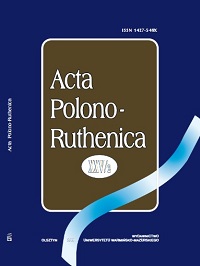Elementy tricksteriady w dawnych polskich i rosyjskich zwycza-jach kolędniczych
Elements of “tricksteriada” in old Polish and Russian carolling customs
Author(s): Anna ZalewskaSubject(s): History, Social Sciences, Language and Literature Studies, Geography, Regional studies, Regional Geography, Sociology, Theology and Religion, Sociology of Religion
Published by: Wydawnictwo Uniwersytetu Warmińsko-Mazurskiego w Olsztynie
Keywords: “tricksteriada”; carolling customs, folk culture; carnival; Slavic rites
Summary/Abstract: This paper provides a comparative analysis of Polish and Russian carolling activity, which may be considered as a symbolic celebration of “tricksteriada”. Descriptions of carolling customs cultivated in the 19th- and at the beginning of the 20th century, primarily in ethnographic studies, were used as the source material. The issue mentioned above, to date, has not been studied, except quite limited comments concerning the “trickster” nature of masqueraders and their plays. Folk culture, i.e. a syncretic creation, was formed by pagan and Christian elements. In the context of the subject of this paper, rituals such as Christmas and New Year’s carolling prove its Slavic origin. The “supernatural visitors”, dressed as animals and anthropomorphic characters, violate cultural taboos. During carnival the order is reversed and provocative behaviour is acceptable. The carollers, in their role as traveling actors, seem to impersonate jesters in plays.
Journal: Acta Polono-Ruthenica
- Issue Year: 2/2020
- Issue No: XXV
- Page Range: 121-136
- Page Count: 16
- Language: Polish

